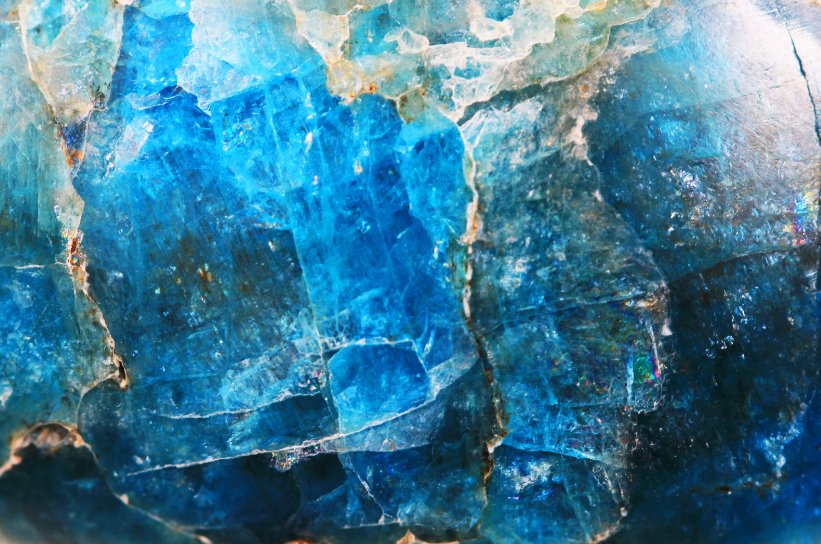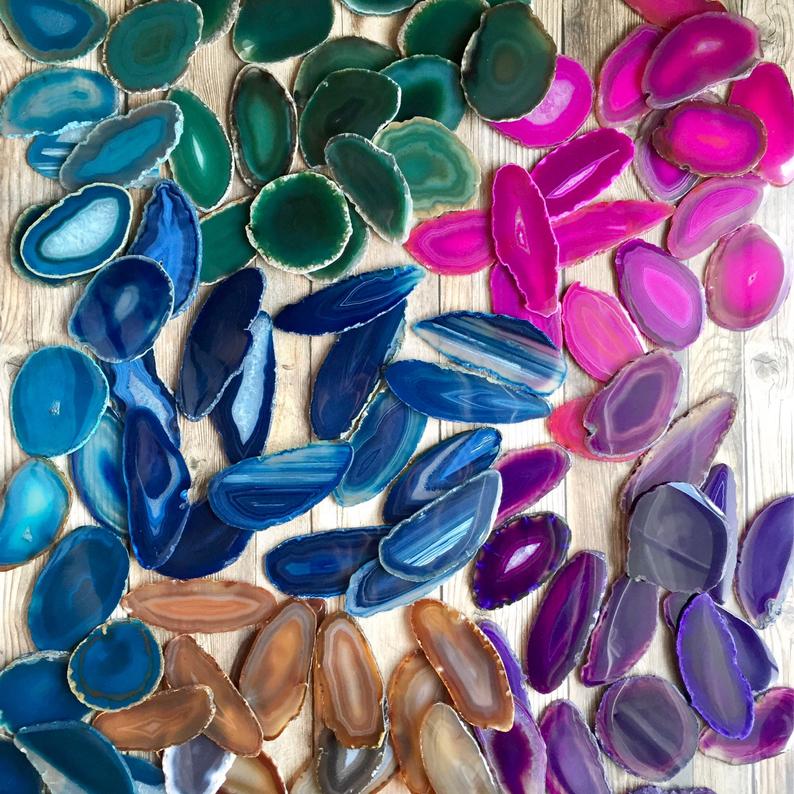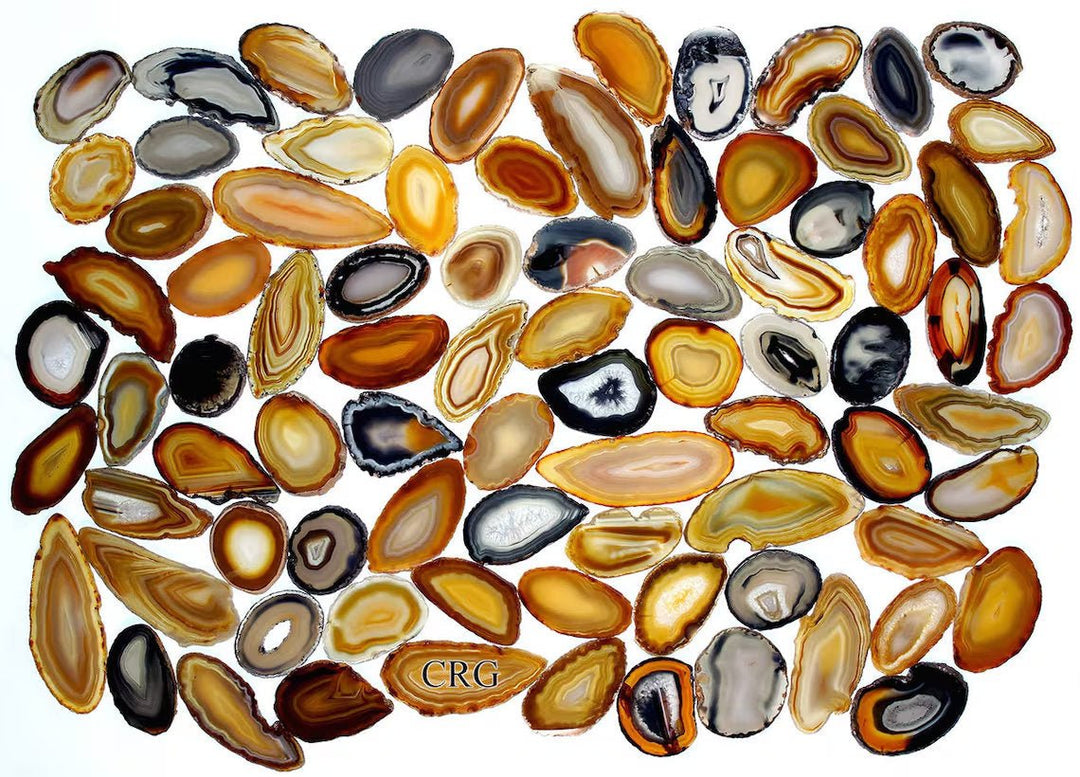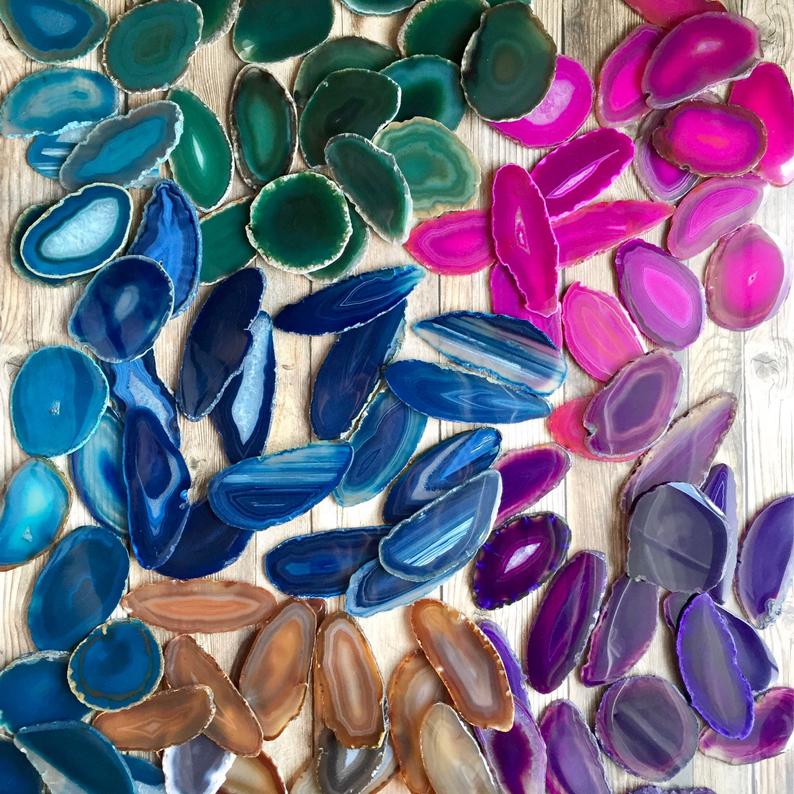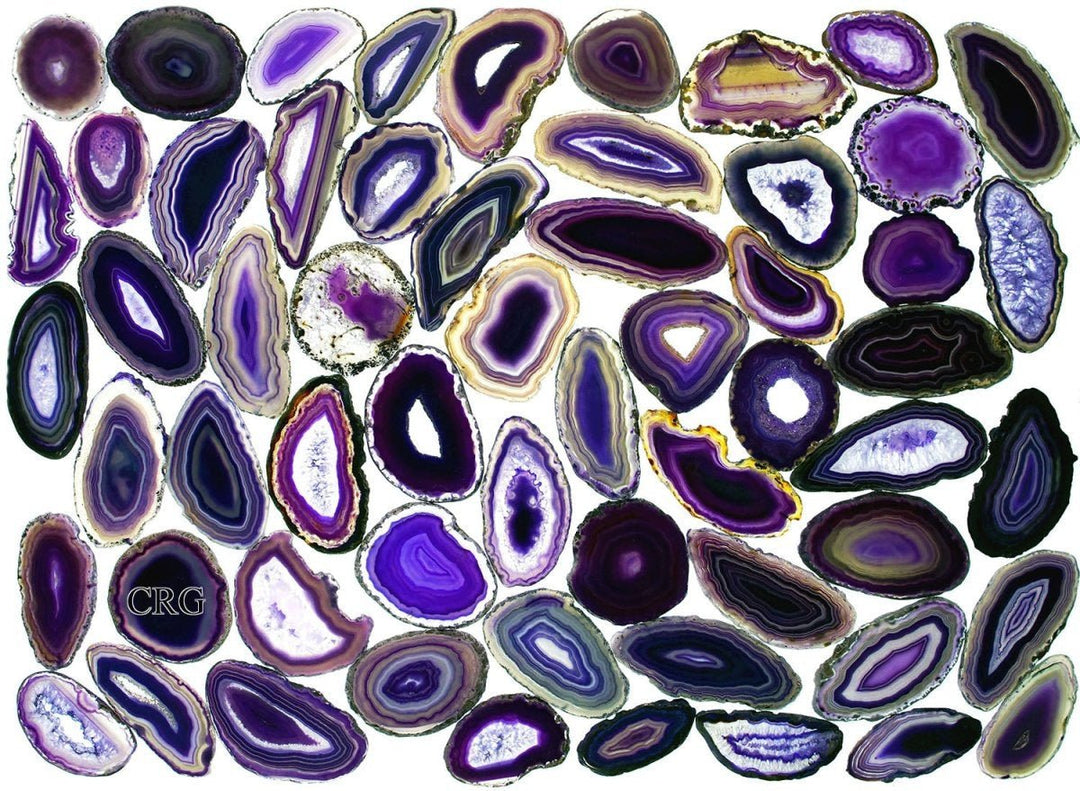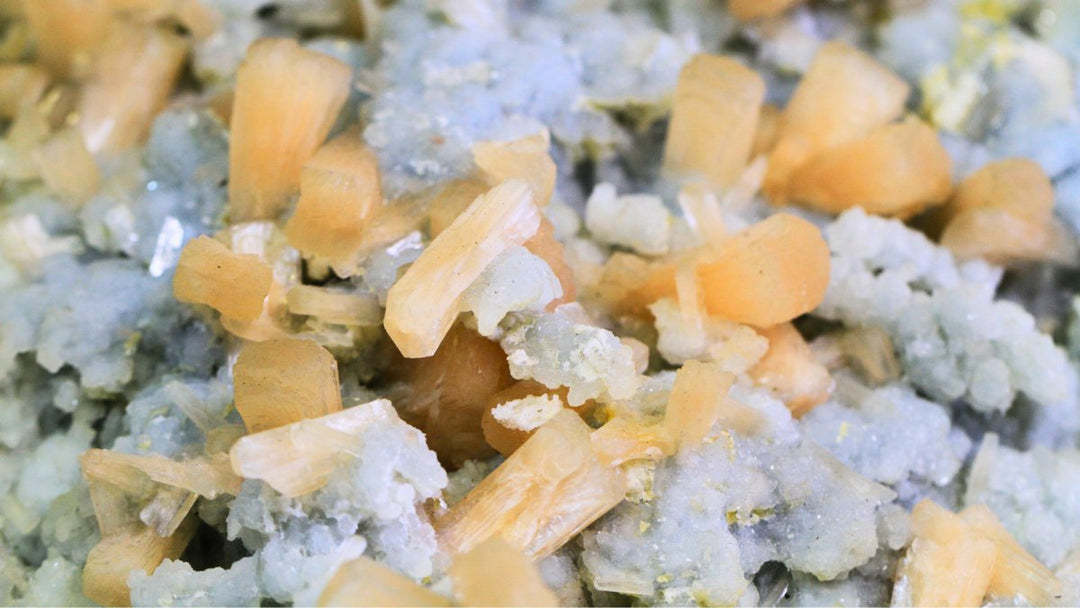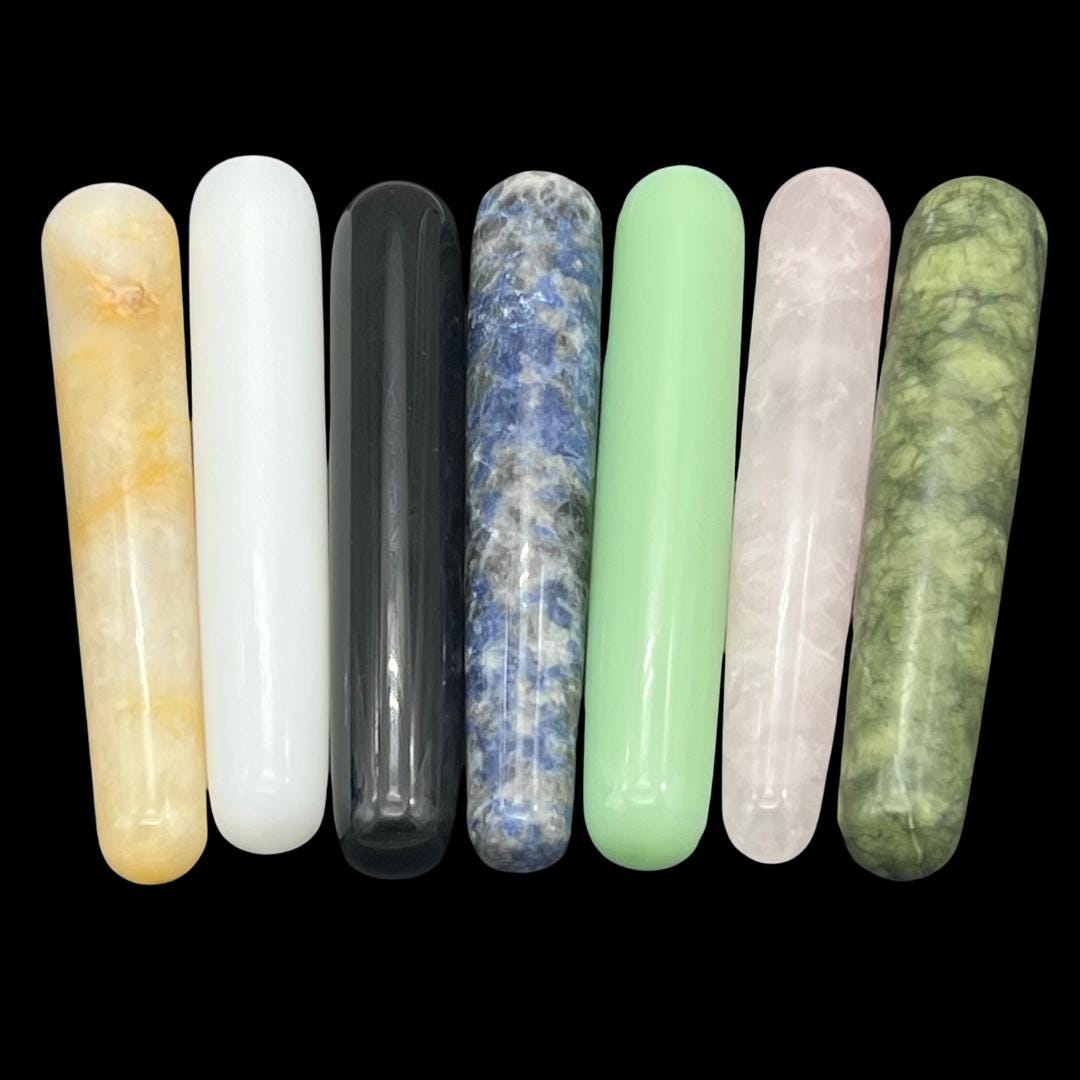Have you ever held a blue apatite sphere and felt you were looking down at a little oceanic world? If not, we strongly recommend trying it. The rich blue emanating from the crystal evokes images of water, of life, and of the mysteries that swim at the bottom of the sea. We’re going to dive in and discover what blue apatite wants to show us.

The mineral apatite is composed of calcium phosphate, with the chemical formula Ca5(PO4)3(OH,F,Cl). Manganese is usually responsible for the blue or green color in apatite, which can also present in other colors such as white, yellow, purple, brown, and colorless. The stone is usually translucent, although some specimens may be opaque. The crystal structure is hexagonal, meaning it has six-fold symmetry, and its crystal lattice is composed of repeating units of phosphate tetrahedra and calcium ions. Apatite has a vitreous luster, which means it reflects light like glass. We’re certain the glassy luster aids in blue apatite’s marine appearance!

How about the formation of apatite? Several different processes are responsible for this stone. It can be formed through igneous processes (when crystallization occurs from magmas or melts rich in calcium and phosphorus), sedimentary processes (when apatite precipitates from aqueous solutions in sedimentary environments), and metamorphic processes (when apatite is formed after rocks are subjected to high temperatures and pressures). The crystal is widely distributed throughout the world but is most commonly found in settings like Canada, Russia, Brazil, the United States, and Morocco. It can reveal crucial information about the geological history and processes in those locations.
But perhaps the most astonishing fact about apatite is that it can occur in biological tissues. Yes, you read that correctly! Apatite is an important component of bone and teeth; it strengthens these tissues and lends them hardness. It can also be found in other biological materials such as fish scales and otoliths (a structure in the inner ear of vertebrates). Apatite’s occurrence in biological tissues gives the crystal a special importance in biology and medicine. The crystal is biocompatible, meaning it can be used in biomedical applications like bone grafts and dental implants.

In fact, apatite has many more uses beyond the medical. Because it is high in phosphate, which is a key nutrient needed for plant growth, it is widely used in the production of fertilizers. Another function of apatite lies in the ceramic industry, where it assists in the production of ceramics like dinnerware and decorative tiles. Due to its gorgeous colors, apatite is a gemstone often found in jewelry – not just blue apatite, but green and yellow as well. Lastly, since apatite has such unique properties, many researchers study the mineral in geology, material science, and biology.
Blue apatite catches light like the crest of a glossy ocean wave. Its mesmerizing color bestows a feeling of tranquility on those who look upon it. We are not surprised that apatite is sometimes found in fish scales; when we see it, we witness the connection between stone and water. Blue apatite reminds us that the world’s systems are more integrated than we think. There is a piece of everything in everything else, and just like manganese inclusions offer blue to apatite, so too are we inclusions giving color to the world.



